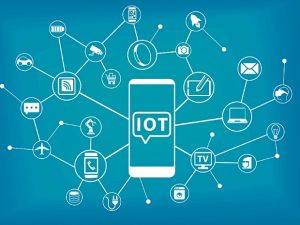
I get ten to twenty calls a day asking about my experience with the Internet of Things. My first response is the question – did you read my resume? The usual answer is,the acronym IOT is there but you don’t write about IOT. My next question is — what is IOT? What is it about accomplishing? And what technologies are applied to satisfy the requirements of IOT? I usually get back silence. I then spend fifteen to thirty minutes explaining about what IOT is and what IOT is not.I have decided to write a short post that will perhaps help those recruiting for IOT expertise.
From Wikipedia:
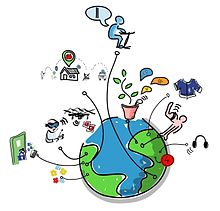
“The Internet of things (IoT) is the inter-networking of physical devices, vehicles (also referred to as “connected devices” and “smart devices“), buildings, and other items embedded with electronics, software, sensors, actuators, and network connectivity which enable these objects to collect and exchange data.[1][2][3] The IoT allows objects to be sensed or controlled remotely across existing network infrastructure,[4] creating opportunities for more direct integration of the physical world into computer-based systems, and resulting in improved efficiency, accuracy and economic benefit in addition to reduced human intervention.[5][6][7][8] When IoT is augmented with sensors and actuators, the technology becomes an instance of the more general class of cyber-physical systems, which also encompasses technologies such as smart grids, virtual power plants, smart homes, intelligent transportation and smart cities. Each thing is uniquely identifiable through its embedded computing system but is able to inter-operate within the existing Internet infrastructure. Experts estimate that the IoT will consist of about 30 billion objects by 2020.[9]
Typically, IoT is expected to offer advanced connectivity of devices, systems, and services that goes beyond machine-to-machine (M2M) communications and covers a variety of protocols, domains, and applications.[10] The interconnection of these embedded devices (including smart objects), is expected to usher in automation in nearly all fields, while also enabling advanced applications like a smart grid,[11] and expanding to areas such as smart cities.[12][13]“
The description is pretty clear — a bunch of things — devices — phones, TVs, washing machines, traffic lights, meters, etc. The things have been around a long time. But now the things are labeled as “Smart”. Smart being they can communicate in three directions:
a. To the local environment
b. Among them selves – point to point
c. To a back end.
I don’t want to trivialize device capabilities. I have worked with devices that have accelerometers — detect motion – gyroscope — direction — cameras — track flow — IR — track movement in the dark – flir camera – track body heat. Incredible capabilities in very small packages.
But these capabilities have been around for a decade. It is all about who your customer is and how advanced that customer is.
The big differences now:
- Size of foot print.
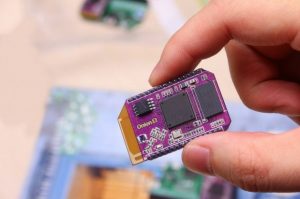
- Size of collection devices
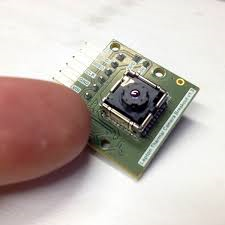
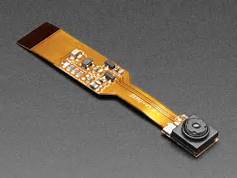
- Spectrum of collection capabilities
 This list can go on and on. What separates now from five to ten years ago, these devices with these capabilities are available to the general public at extremely low costs.
This list can go on and on. What separates now from five to ten years ago, these devices with these capabilities are available to the general public at extremely low costs.
The devices and all the capabilities are of little value without the ability to communicate. Depending upon the platform Ethernet, WiFi, Bluetooth and BLE are available. But once you start moving data from point A to point B, security and how to protect data becomes important. This requirement has been around for decades and has been satisfied with encryption. There is a slight twist with these smart devices – they are resource constrained. Some run on batteries. When you encrypt, you automatically send more bits per message. And when you send binary data, the data is often encoded to meet Json requirements — even more bits per message – not too big a deal when you are send short messages. But when you stream real time video, number of bits transported rapidly climbs. When the number of bits per second increase the resource utilization — battery drain goes up.
The real world is not perfect. For years, I just used TCP/IP, check pointed my messages — kept them small to shorten retry times and built queues at both ends. Now, that is no longer necessary.
There are protocols like LoRa that minimize resource utilization and get messages from one point to another 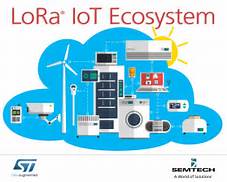
There are protocols like MQTT and Kafka that can rapidly support hundreds of thousands of messages and guarantee that messages are safely delivered
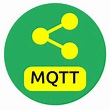
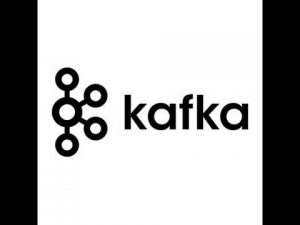
To help injest all this traffic, there are services such as PubSub from Google Cloud.
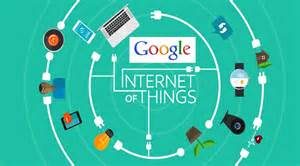
Now we have the data at a back end. Not all that complex, but the design and implementation at the sensor level always has to factor in resource constrained devices — you have to be aware what that little platform is trying to accomplish with a very little set of resources. This is not like Windows or even Linux on a desktop.
Time to talk about data — huge quantities of data. One device with one stream of data – not too bad. Tens of thousands of devices scattered around the globe — some thought and the cloud — there are solutions.
Lets talk about storing of data. In quantity, the word “petabyte” is now common – that is 1,000,000,000,000,000 bytes of data. And folks like Microsoft, Amazon and Google are looking at “exabytes” — that is 1,000,000,000,000,000,000 bytes of data. Hardware wise, the big three can handle data like this — and Intel agencies have been doing this for a long time. To manage the storage, the fall back — Relational Database Management Systems — can not support the real time storage and access to data with these numbers.
Enter NoSql Databases:

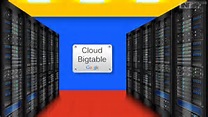
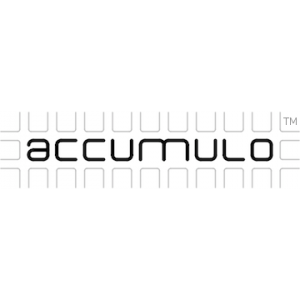
Each has its strengths and weaknesses. But each can handle enormous amounts of storage and supply responses that support near real time.
Now that we have a place to store the data, we need tools that can handle the real time flow of data into and out of a back end.
Most folks know about Big Data. Most everyone has heard about Hadoop, HDFS, file structures set at 128 MB, and the processing of enormous amounts of data. But Big Data — the world of Hadoop — is about processing batches of data.
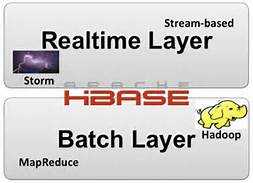
I can — many others already have — write a book on Hadoop, the changing landscape, and real time stream processing. I have to keep this short — I passed my word count goal. There are many infrastructures out there that help with the real time processing of huge amounts of streaming data. I have worked with Apache Stream and Beam. They work extremely well at distributing tasks across a thousand machine and still support near real time.
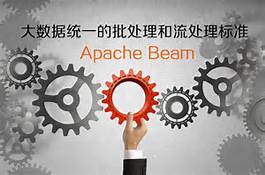
When I think about Hadoop, I think out Machine Learning and the retrieval of enormous amounts of data to train CNN and Recurrent Nets — but that is for another time.
So when I think about IOT, I think about the context, the data flow, security, huge amounts of data and near real time responses.
Anyone out there with questions or needs support in bringing an IOT application to life, please feel free to call.
Troy
6035056500
